
Country Joe and the Fish was an American psychedelic rock band formed in Berkeley, California, in 1965. The band was among the influential groups in the San Francisco music scene during the mid- to late 1960s. Much of the band's music was written by founding members Country Joe McDonald and Barry "The Fish" Melton, with lyrics pointedly addressing issues of importance to the counterculture, such as anti-war protests, free love, and recreational drug use. Through a combination of psychedelia and electronic music, the band's sound was marked by innovative guitar melodies and distorted organ-driven instrumentals which were significant to the development of acid rock.

The Rolling Stones, Now! is the third American studio album by English rock band The Rolling Stones, released in March 1965 by their initial American distributor, London Records. Although it contains two previously unissued songs and an alternative version, the album mostly consists of songs released earlier in the United Kingdom, as well as the group's recent single in the United States, "Heart of Stone" backed with "What a Shame". Mick Jagger and Keith Richards wrote four of the songs on the album, with the balance composed by American rhythm and blues and rock and roll artists.

Blues is a compilation album of blues songs recorded by American singer/songwriter/musician Jimi Hendrix. Compiled by interim Hendrix producer Alan Douglas, it was released April 26, 1994, by MCA Records. The album contains eleven songs recorded by Hendrix between 1966 and 1970, six of which were previously unreleased. Hendrix wrote seven of the pieces; other writers include Muddy Waters, Booker T. Jones, and Elmore James. Most are demos, jams, and live recordings, which Hendrix may or may not have completed for release.

I Got Dem Ol' Kozmic Blues Again Mama! is the debut solo and third studio album overall by American singer-songwriter Janis Joplin, released on September 11, 1969, by Columbia Records. It was the first album which Joplin recorded after leaving her former band, Big Brother and the Holding Company, and the only solo album released during her lifetime.
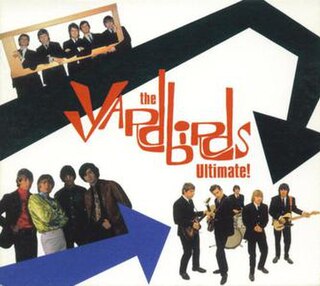
Ultimate! is a comprehensive career retrospective album by English rock group the Yardbirds. The 52-song two–compact disc compilation was released in 2001 by Rhino Records. The tracks span the period from the group's first demo recordings in 1963 to the last singles in 1968. They include all 17 of the group's singles, both A-side and B-sides, supplemented with more than a dozen album tracks, their performance for the film Blow-Up, and three early solo numbers by singer Keith Relf.
Ultimate Spinach was a short-lived American psychedelic rock band from Boston, Massachusetts which was formed in 1967. In terms of style and national recognition, the band was one of the most prominent musical acts to emerge from the "Bosstown Sound", which was a marketing campaign posing as a regional attempt to compete with the San Francisco Sound. During the group's existence, they released three albums, with their self-titled debut the most commercially successful.

Great Speckled Bird is a country rock album by Great Speckled Bird, a band formed in 1969 by Canadian musicians Ian and Sylvia Tyson. The other group members at the time of recording were Buddy Cage, on pedal steel guitar, Amos Garrett, on guitar and backup vocals, and N.D. Smart, on drums. Nashville session musicians David Briggs and Norbert Putnam sat in, with Briggs on piano and Putnam on bass guitar. Although founding member Ken Kalmusky is listed in the original liner notes, he had actually departed the group prior to recording.

Randy Holden is an American guitarist best known for his membership of the West Coast acid rock group Blue Cheer and performance on their third album, New! Improved! (1969). His solo album Population II (1970) is considered to be one of the earliest examples of doom metal. Holden is also a painter.

Groovin' is the third album by the rock band the Young Rascals. The album was released on July 31, 1967 and rose to #5 on the Billboard Top LPs chart, number 7 on the R&B chart, and number 2 in Canada. Eight of the songs were released on singles with the title track reaching number 1 on the Pop chart in the U.S.

"Wishful Sinful" is a song by American rock band the Doors. Group guitarist Robby Krieger wrote the tune, which was first released in March 1969 as a single, as well as on the band's fourth album, The Soft Parade, later in July. "Wishful Sinful" follows the general theme of the album by incorporating elements of classical music.
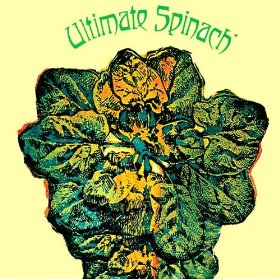
Ultimate Spinach is the 1968 self-titled debut studio album by the American psychedelic rock band Ultimate Spinach, and was released on the MGM Records label (E/SE-4518) simultaneously with the debut LP of two other Boston-area bands, Beacon Street Union and Orpheus. Both albums were heavily promoted by the label as being representative of the "Bosstown Sound". The commercial ploy was heavily driven in psychedelic music that attempted to replicate the San Francisco Sound.
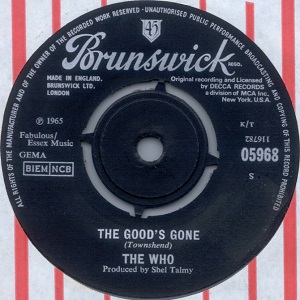
"The Good's Gone" is a song by English rock band the Who, written by their guitarist Pete Townshend. Initially recorded and sequenced as the third track of their debut My Generation in December 1965, it was released as the B-side to "La-La-La-Lies" in November 1966. Heavily inspired by Ray Davies song "See My Friends", Townshend wrote the track with blues in mind.

"End of the Night" is a song by the American psychedelic rock band the Doors. It was featured on the band's debut album and then released as the B-side to the album's first single, "Break On Through " in January 1967.

Apple Pie Motherhood Band was an American psychedelic rock band formed in Boston, Massachusetts, in 1967. One of the several groups involved in the "Bosstown Sound", a commercial ploy designed to compete with the San Francisco Sound, the band developed a blend of psychedelia, blues rock, and hard rock, which was exemplified and expanded upon on their two albums. The group went through several line-up changes before disbanding in 1970.

The Freeborne was an American psychedelic rock band formed in Boston, Massachusetts in 1966. The band was one of the numerous groups associated with the "Bosstown Sound", and is noted for releasing one eclectic album, Peak Impressions, in 1967, which exemplified the young members' versatility embedded in psychedelia.
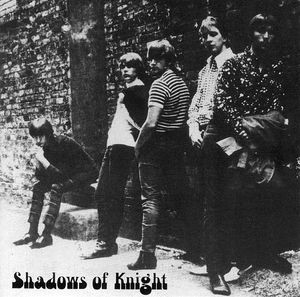
Raw 'n' Alive at the Cellar, Chicago 1966! is a live album by the American garage rock band the Shadows of Knight, and was released on Sundazed Records in 1992. The album consists of recordings from the band's appearance at the Cellar in Arlington Heights, Illinois in December 1966. Although the tapes were never anticipated to be released publicly, Raw 'n' Alive at the Cellar is commended for its good sound quality, and represents one of the better live concert recordings to emerge from the garage rock era.
Creation of Sunlight was an American psychedelic rock band formed originally as a cover group in Long Beach, California, in 1968. Though much of the group's history was initially unknown—even their name was obscured—overtime they have come to the attention of psychedelic music enthusiasts for their sole album, which was released in 1969. The Creation of Sunlight's sound incorporated different aspects of their California contemporaries, such as the cheery nuance of sunshine pop and harder-edge acid rock.
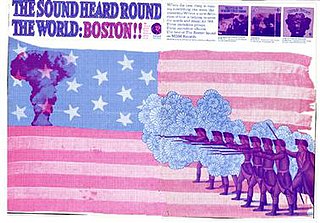
The Bosstown Sound was the catchphrase of a marketing campaign to promote psychedelic rock and psychedelic pop bands in Boston, Massachusetts, in the late 1960s. The concept was conceived by the record producer Alan Lorber as a marketing strategy intended to establish several underground musical artists native to the city on the national charts and compete with the popular San Francisco Sound. Lorber chose Boston for his plan because of the several bands developing in the city, the abundance of music venues, and the proximity of MGM Records, which had signed the core groups.
Chamaeleon Church was a short-lived American psychedelic rock band formed in Boston, Massachusetts, in 1967. It was founded by singer-songwriter Ted Myers after the disbandment of the Lost. Chamaeleon Church recorded one self-titled album in 1968. Similar to other psychedelic groups native to Boston, the band is remembered for its relation to the Bosstown Sound. In addition, the band had future actor and comedian Chevy Chase as a member.

Ultimate Spinach III is the third and final studio album by the American psychedelic rock band Ultimate Spinach, and was released on MGM Records in 1969.
















